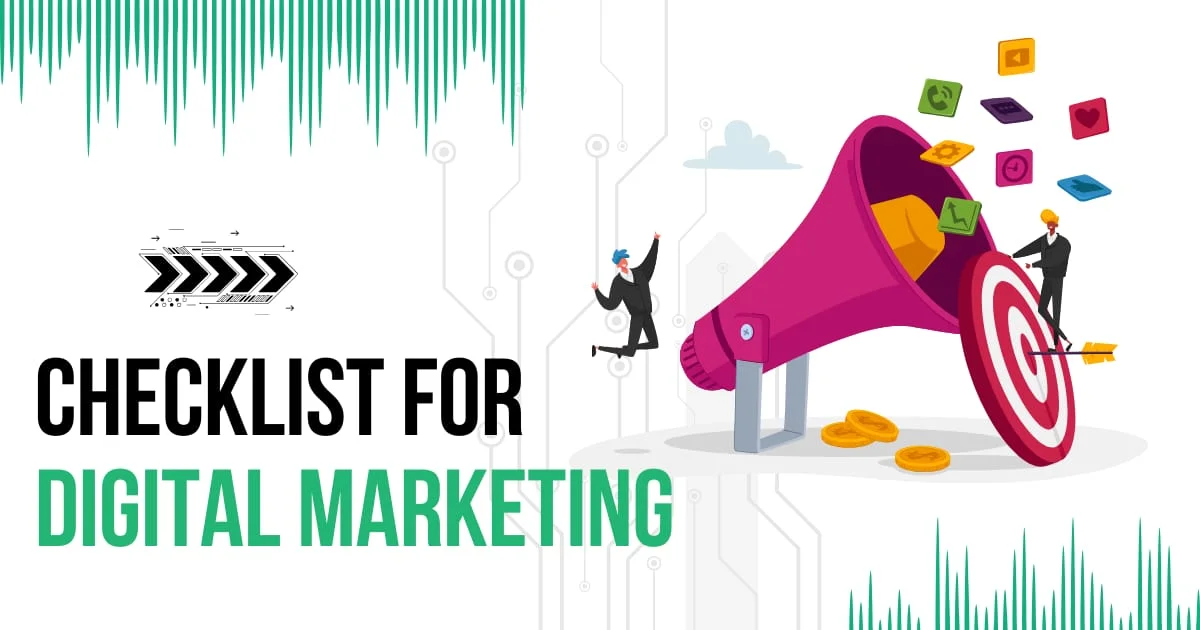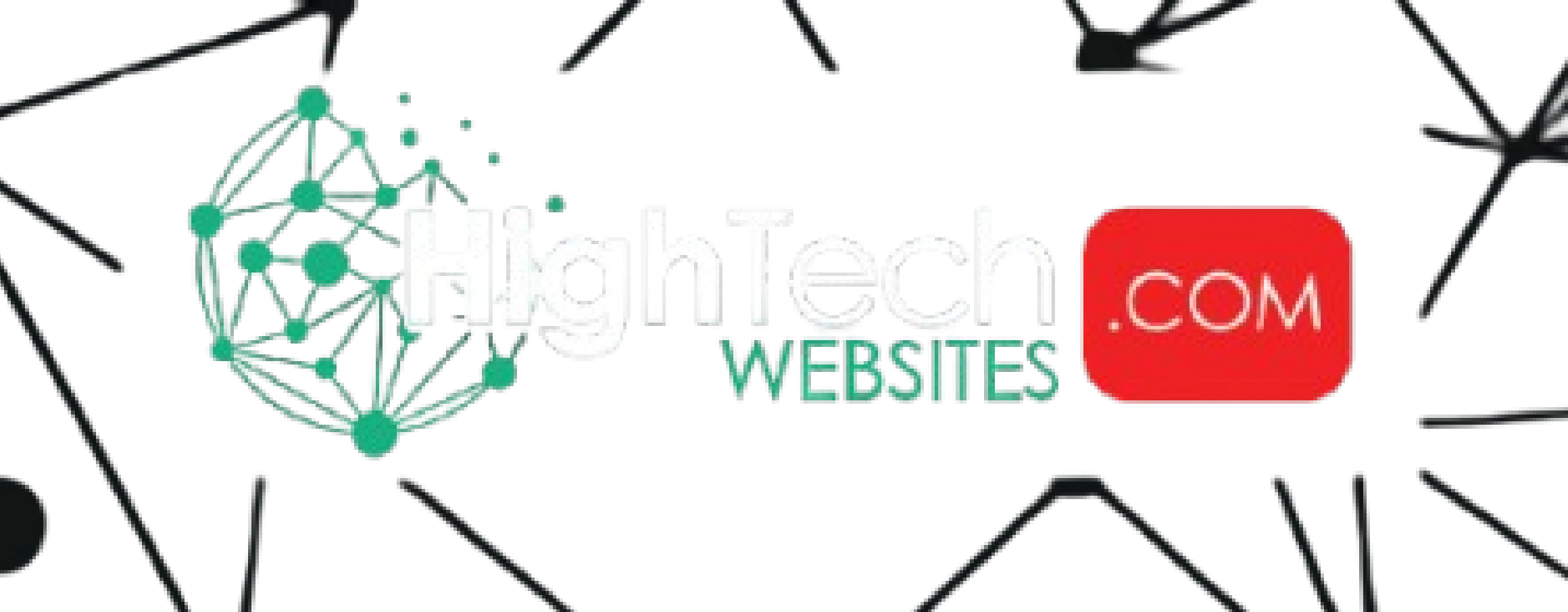Hightech Website 2025-04-24
Your 2025 Digital Marketing Checklist: What Every Business Must Do to Stay Relevant

Introduction
As we step further into the digital-first era, businesses face a rapidly evolving online landscape that demands adaptation, innovation, and strategy. Digital marketing in 2025 is no longer a luxury—it’s a survival tool. With the convergence of AI-driven tools, voice search, changing social media behaviors, and heightened user expectations, every business, regardless of size, must adopt a proactive and data-informed marketing strategy. This comprehensive guide serves as your 2025 digital marketing checklist to ensure your business remains visible, competitive, and impactful.
1. Website Optimization: The Digital Storefront
Your website is often the first impression you make—make it count.
- Mobile-First Design
Google prioritizes mobile usability in its indexing. Your website must be mobile responsive, load quickly on smartphones, and offer a seamless experience across devices. - Speed Optimization
A delay of even 1 second in load time can reduce conversions by 7%. Use tools like Google PageSpeed Insights and GTmetrix to optimize image sizes, compress scripts, and implement lazy loading. - Secure & Accessible
SSL certificates, GDPR compliance, and ADA accessibility are non-negotiables. A secure and accessible site builds trust and avoids legal issues. - Modern Aesthetics + UI/UX
Use a minimalist, clean layout with intuitive navigation and engaging visuals. Consider trends like glassmorphism, micro-interactions, and dark mode to stay fresh.
2. SEO: Visibility in the New Age
Search Engine Optimization remains a long-term, high-ROI pillar of digital marketing.
- On-Page SEO Checklist
- ? Optimized titles, headers (H1, H2, etc.)
- ? Keyword-rich meta descriptions
- ? Schema markup for rich results
- ? Optimized images with alt-text
- ? Internal linking strategy
- Off-Page SEO
- ? Build high-quality backlinks from niche websites
- ? Guest blogging and influencer outreach
- ? Business citations in directories (Yelp, YellowPages, etc.)
- Technical SEO
- ? Mobile indexing
- ? Sitemap and robots.txt optimization
- ? Crawlability and URL structure
- ? Core Web Vitals performance
- Voice Search Optimization
With the rise of Alexa, Google Assistant, and Siri, optimize for natural-sounding, long-tail phrases and FAQs.
3. Content Marketing: Inform, Educate, Convert
Content is no longer king—it’s the kingdom. A strategic content approach fuels SEO, builds authority, and nurtures leads.
- Pillar Content & Topic Clusters
Create cornerstone articles around key topics and link to cluster content that supports it. This helps with SEO and user engagement. - Video Marketing
Videos dominate user engagement. Use:- Product explainers
- Behind-the-scenes clips
- Client testimonials
- Short-form Reels/YouTube Shorts
- Blog Strategy
Consistently publish optimized, valuable, and shareable blog content with clear CTAs. Refresh old content regularly to keep it relevant. - AI-Enhanced Creation
Use tools like Jasper, Copy.ai, or ChatGPT (yours truly) to ideate, draft, and optimize content efficiently.
4. Paid Advertising (PPC): Immediate Traffic & Conversions
SEO is the long game; PPC provides immediate visibility.
- Google Ads
Use intent-driven keywords with proper ad extensions and A/B tested landing pages. Implement conversion tracking via Google Tag Manager. - Facebook & Instagram Ads
Leverage Meta’s targeting based on behavior, interest, and custom audiences. Use carousel ads, reels, and lead-gen forms. - YouTube Ads
Video ads perform exceptionally on YouTube. Run skippable ads, bumper ads, and sponsored content to engage visually. - Retargeting
Run retargeting ads for users who visited your site but didn’t convert. It often yields higher ROI than cold traffic.
5. Social Media: Connect Where Your Customers Hang Out
A strong social presence builds community, trust, and brand loyalty.
- Platform-Specific Strategy
- Instagram/TikTok: Visual storytelling, Reels, UGC
- LinkedIn: B2B authority-building through articles, polls, and case studies
- Facebook: Community engagement, events, and ads
- Pinterest: Great for products and blog distribution
- Consistent Branding
Keep your brand voice, color scheme, and posting style consistent across all channels. - Engagement Tactics
- Host contests
- Go Live
- Respond to comments and messages quickly
- Collaborate with micro-influencers
6. Email & CRM Integration: Nurture Leads into Loyal Customers
Despite the rise of social media, email marketing still delivers one of the highest ROIs.
- Segmented Email Campaigns
Personalized campaigns based on user behavior, interest, or funnel position drive more conversions. - Automated Workflows
Use tools like Mailchimp, ActiveCampaign, or HubSpot for:- Welcome sequences
- Cart abandonment
- Win-back campaigns
- Post-purchase check-ins
- CRM Usage
Implement a CRM to track customer interactions, manage leads, and analyze sales pipelines effectively. Sync your marketing and sales teams.
7. Analytics & Reporting: Data-Driven Decision Making
You can’t grow what you can’t measure.
- Google Analytics 4 (GA4)
Track real-time events, user paths, and engagement metrics. GA4's machine-learning models help with predictive insights. - Heatmaps & Session Recordings
Use tools like Hotjar or Crazy Egg to watch user behavior in real-time and improve UX. - Monthly KPI Reviews
Key metrics to track:- Conversion rate
- Bounce rate
- ROAS (Return on Ad Spend)
- CPL (Cost Per Lead)
- Website traffic sources
8. Online Reputation Management
Your online image influences buyer decisions before they ever contact you.
- Google Reviews Strategy
- Encourage satisfied clients to leave reviews
- Respond to every review (positive or negative)
- Flag inappropriate reviews
- Monitor Mentions
Set Google Alerts or use tools like Brand24 to track your brand mentions across the web.
9. AI & Automation: Work Smarter
AI isn't replacing marketers—it's making them more effective.
- Chatbots
Add live chat or AI bots for instant customer support. Integrate with CRM tools for smart routing. - Predictive Analytics
Use AI to forecast trends, customer behavior, and campaign outcomes. - Marketing Automation
Automate posting, email flows, and analytics with tools like:- Zapier
- Buffer
- Sprout Social
- HubSpot
10. Digital Branding & Design Consistency
Your visual identity must be memorable, modern, and consistent.
- Brand Kit
Include a logo suite, color palette, typography, and image style guide. - Design Tools
Use tools like Canva Pro or Adobe Express to create branded social posts, email headers, and brochures quickly. - Accessibility & Inclusivity
Design for all. Use readable fonts, high-contrast colors, and consider users with disabilities.
11. E-Commerce Considerations (if applicable)
For online stores, digital marketing plays an even more critical role.
- Product SEO
Optimize product titles, descriptions, and images for search engines. - Cart Abandonment Strategies
Retarget users with reminders, limited-time discounts, and email nudges. - Social Shopping
Use Facebook Shops, Instagram Shopping, and TikTok Shop integrations to enable direct purchases.
12. Stay Ahead with Trends & Innovation
The digital marketing space is constantly evolving.
- Attend Webinars & Conferences
Follow experts, attend virtual summits like MozCon, INBOUND, or Social Media Week. - Experiment with New Formats
Try gamified content, AI-generated art, interactive polls, or virtual try-on tools (AR). - Be Ready for Web3 & Decentralized Platforms
While still emerging, keeping an eye on blockchain-based advertising and decentralized social platforms can prepare you for the next wave.
Conclusion
In 2025, staying relevant in digital marketing means more than running ads or posting on social media. It’s about creating a full-fledged ecosystem that combines visibility, engagement, trust, and innovation. Whether you're a small business or scaling enterprise, this checklist gives you a 360-degree view of what it takes to succeed in today's digital battlefield. By continuously refining your strategies and tools, you don't just keep up—you lead.


